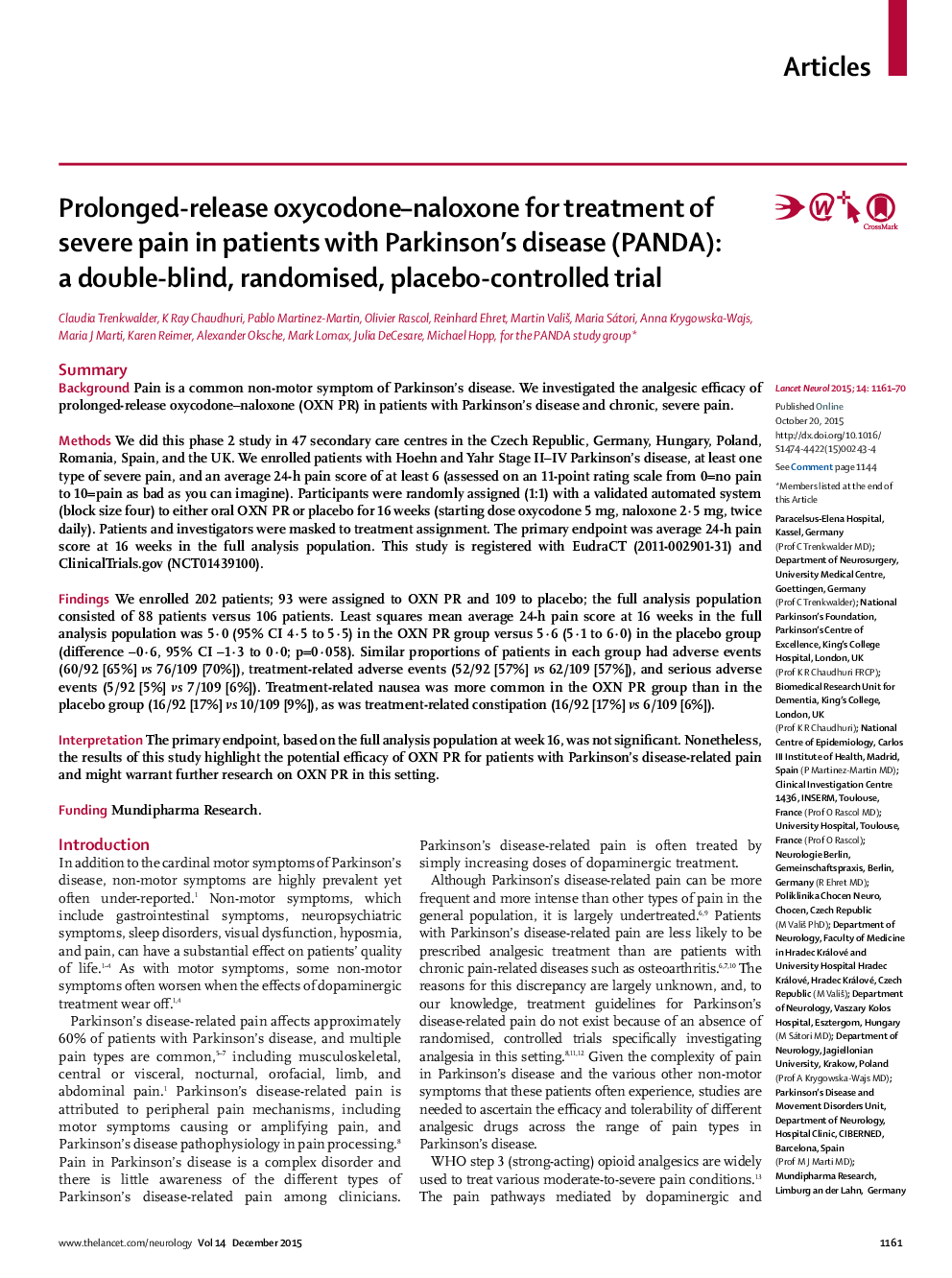| کد مقاله | کد نشریه | سال انتشار | مقاله انگلیسی | نسخه تمام متن |
|---|---|---|---|---|
| 3066310 | 1188063 | 2015 | 10 صفحه PDF | دانلود رایگان |

SummaryBackgroundPain is a common non-motor symptom of Parkinson's disease. We investigated the analgesic efficacy of prolonged-release oxycodone–naloxone (OXN PR) in patients with Parkinson's disease and chronic, severe pain.MethodsWe did this phase 2 study in 47 secondary care centres in the Czech Republic, Germany, Hungary, Poland, Romania, Spain, and the UK. We enrolled patients with Hoehn and Yahr Stage II–IV Parkinson's disease, at least one type of severe pain, and an average 24-h pain score of at least 6 (assessed on an 11-point rating scale from 0=no pain to 10=pain as bad as you can imagine). Participants were randomly assigned (1:1) with a validated automated system (block size four) to either oral OXN PR or placebo for 16 weeks (starting dose oxycodone 5 mg, naloxone 2·5 mg, twice daily). Patients and investigators were masked to treatment assignment. The primary endpoint was average 24-h pain score at 16 weeks in the full analysis population. This study is registered with EudraCT (2011-002901-31) and ClinicalTrials.gov (NCT01439100).FindingsWe enrolled 202 patients; 93 were assigned to OXN PR and 109 to placebo; the full analysis population consisted of 88 patients versus 106 patients. Least squares mean average 24-h pain score at 16 weeks in the full analysis population was 5·0 (95% CI 4·5 to 5·5) in the OXN PR group versus 5·6 (5·1 to 6·0) in the placebo group (difference −0·6, 95% CI −1·3 to 0·0; p=0·058). Similar proportions of patients in each group had adverse events (60/92 [65%] vs 76/109 [70%]), treatment-related adverse events (52/92 [57%] vs 62/109 [57%]), and serious adverse events (5/92 [5%] vs 7/109 [6%]). Treatment-related nausea was more common in the OXN PR group than in the placebo group (16/92 [17%] vs 10/109 [9%]), as was treatment-related constipation (16/92 [17%] vs 6/109 [6%]).InterpretationThe primary endpoint, based on the full analysis population at week 16, was not significant. Nonetheless, the results of this study highlight the potential efficacy of OXN PR for patients with Parkinson's disease-related pain and might warrant further research on OXN PR in this setting.FundingMundipharma Research.
Journal: - Volume 14, Issue 12, December 2015, Pages 1161–1170